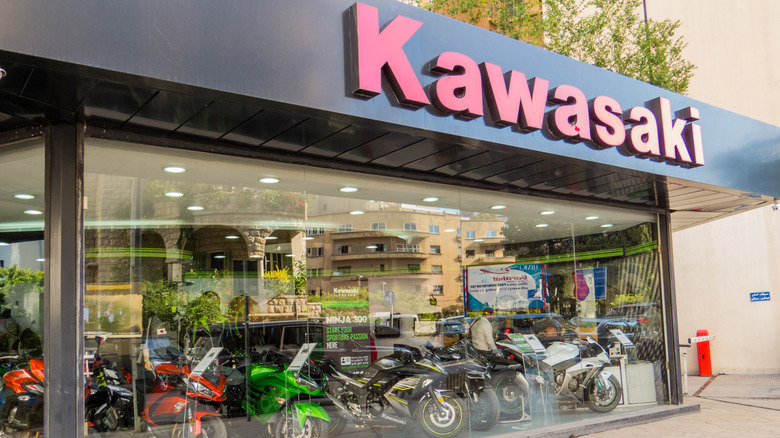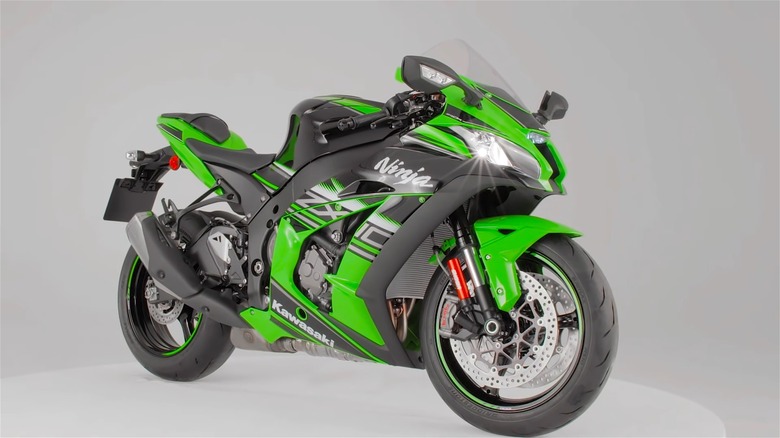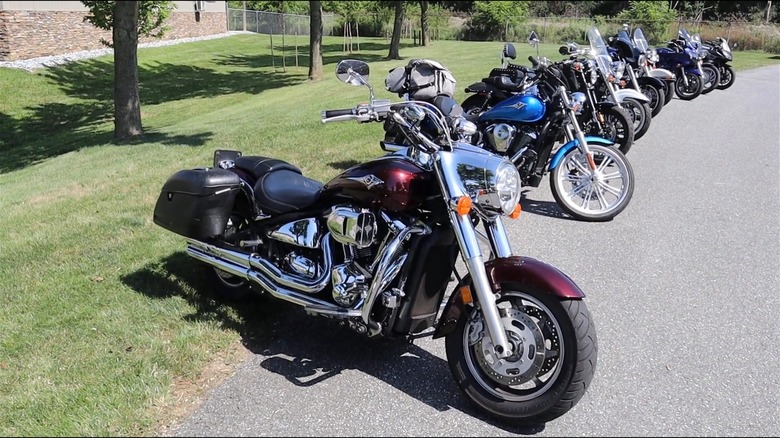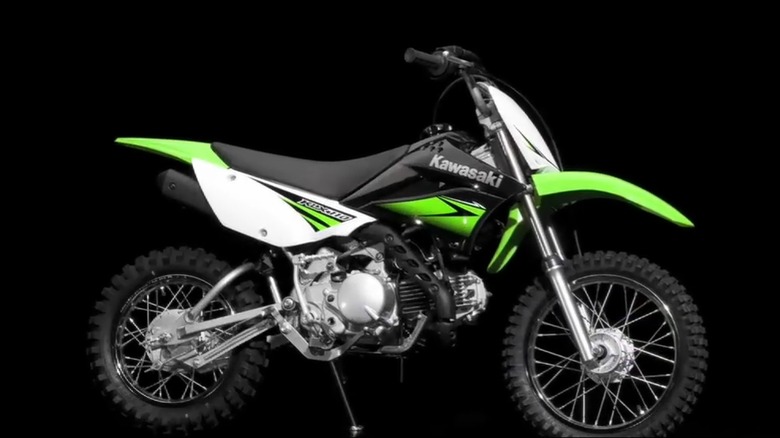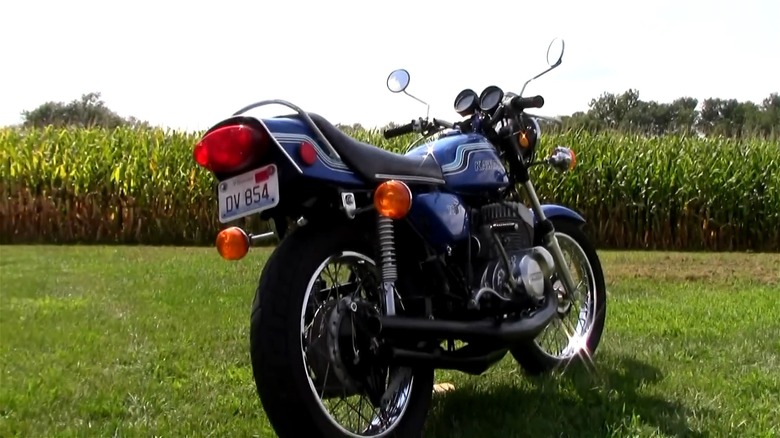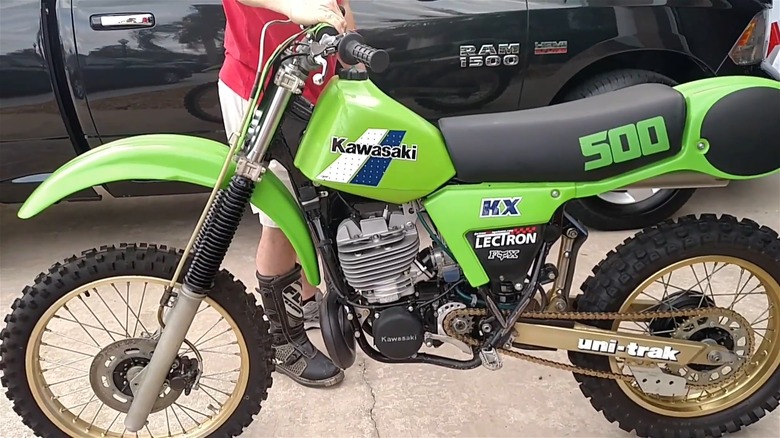5 Used Kawasaki Motorcycles You Should Steer Clear Of At All Costs
It's hard to believe, but even the makers of the Kawasaki Ninja, one of the most famous motorcycles ever made, have stumbled a few times over the years. Certain models from the Japanese manufacturer haven't aged well, include some problems, and should generally be avoided without some intense scrutiny.
Issues with the following used bikes range from mechanical failures and lackluster ergonomics, to leaks and unwieldy performance. Some of these motorcycles suffered recalls (which don't expire). However, Kawasaki.com only provides recall information dating back to late 2009, and you'll need to verify if repair work was completed by the previous owner. Others on this list are just flat out perilous for beginners, like these Kawasaki motorcycles for seasoned riders only.
So, while you can't go wrong with a Kawasaki Ninja 650, one of the most reliable motorcycles ever built, the following examples exemplify the truth in the saying, "Nobody's perfect."
2016-2018 Kawasaki ZX-10R
The 2016 Kawasaki ZX-10R saw the addition of several enhancements over the previous model, such as a more robust braking system, more comprehensive five-level traction control technology, updates to the weight distribution for added stability, and larger engine ports, among other changes. In terms of feel, CycleWorld.com reported increased power on the high end of the spectrum, overcoming the previous iteration of the ZX-10R on straightaways.
However, that's where the praise for the 2016 through 2018 ZX-10R ends, and the trouble with the gearbox begins. The ZX-10Rs gears were crafted using less-than-stellar materials that ran the risk of failure when performance demand was high. This resulted in a major recall of approximately 4,000 motorcycles suspected of being susceptible to broken gears. For a high-performance machine made for speed, owners of the ZX-10R learned that hard acceleration could cause not only damage to their bike, but possibly a crash. While Kawasaki promised to contact those who might be at risk, when looking at a used ZX-10R from this time, it's up to you to find out if the repairs were done or if the gearbox is a ticking time bomb.
2004 Kawasaki Vulcan 2000
At first glance, the 2004 Kawasaki Vulcan 2000 looks like a very appealing cruiser and packs enough punch to outclass Harley-Davidson models of the time. The Harley-Davidson V-Rod offered an 1,130cc V-twin engine and Kawasaki's Vulcan 2000 employed the "bigger is better" mentality with a massive 2,053cc V-twin. With just under 100 horsepower going to the rear-wheel and over 119-lb-ft of torque, what's not to like?
Appearance and performance figures aside, the 2004 Kawasaki Vulcan 2000 proved to be less than practical for all but the most hardcore fans of this cruiser. Firstly, the bike tipped the scales at a rotund 820 pounds, making it a literal workout just to maneuver it around at a stop and retract the kickstand. In addition to weight, the shape of the seat made it a challenge for smaller riders to reach the pavement while straddling the bike. The handlebars also proved to be uncomfortable for some riders, as they forced an extra-wide arm position that went counter to an ergonomic design.
2010-2012 Kawasaki KLX110 and KLX110L
Larger bikes with more potent engines can be an intimidating hurdle for youngsters and beginners. Kawasaki introduced a more compact entry into the world of motocross in 2002 with the launch of the KLX110. This mini-moto bike also received a variant with a taller seat, enhanced ground clearance, and more, called the KLX110L. In 2010, this series experienced a redesign with greater power due to a 112-cc one-cylinder engine. Designed for fun, this bike included several upgrades to the previous models, providing kids and smaller adults a reason to shred through the mud.
Unfortunately, a significant recall of nearly 10,000 of these mini-moto bikes was not only inconvenient, but posed a potentially hazardous situation. Kawasaki discovered that some of these models could sprout a gas leak, creating a dangerous scenario if the fuel ignited from nearby sparks. Those who purchased the KLX110 or 110L between 2010 and 2012 from a dealer, were instructed to return the motorcycle for repairs and avoid running it at all until fixed.
1972 Kawasaki H2 Mach IV
What do you get with an overabundance of output, less-than-stable weight distribution, and a flimsy chassis? You get the 1972 Kawasaki H2 Mach IV, nicknamed 'The Windowmaker,' which has a reputation for bucking riders like an angry bull. With a 748cc two-stroke three-cylinder engine, the bike can generate 74 horsepower and was lightning quick for its time. You can still find them for sale with buyers paying anywhere from $13,250 up to $25,500.
However tempting this classic Kawasaki might look, you might want to consider another option for a few reasons. First, the H2 Mach IV, unlike many other models, has an exceedingly small power window during acceleration. This narrow powerband means that a rider can go from stable to instantly lifting the front wheel off the ground when passing over the performance sweet spot of 3,500 RPM. There were other issues too, such as most of the weight sitting over the rear of the motorcycle, and weak braking power.
1983 Kawasaki KX500
The 1983 Kawasaki KX500 is a legendary dirt bike, but for none of the right reasons. It came off the factory floor complete with several deficiencies and was a challenge to even start. The stock engine performed so badly, the magazines of the time couldn't review it properly because it was breaking apart just warming up, per PulpMX.com.
Kawasaki had sought to improve on their previous dirt bike attempts and (when running properly) the original KX500 was quick, to the manufacturer's credit. However, the advantage of its 500cc engine had to be limited with a lower compression ratio that killed its initial potential in competition.
Fortunately, 1990s models of the KX500 are great used options, rugged in their design, and easy to source parts for, per ADBmag.com. In fact, this series went on to include the KX450, a championship motocross bike. Despite its rough start, the KX name holds meaning for Kawasaki motorcycles and dirt bike enthusiasts alike.
